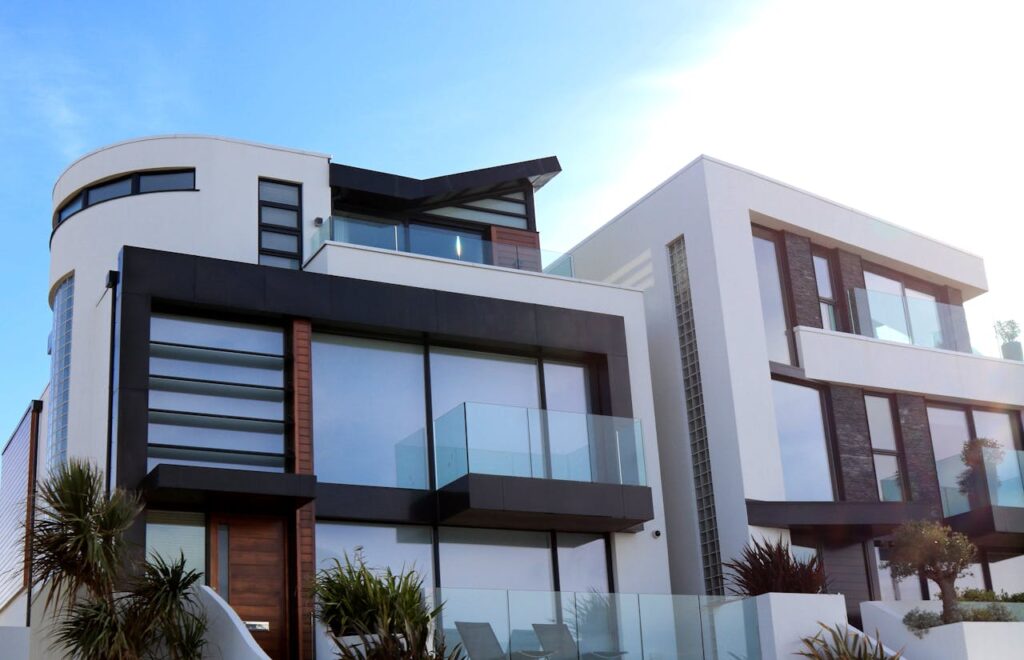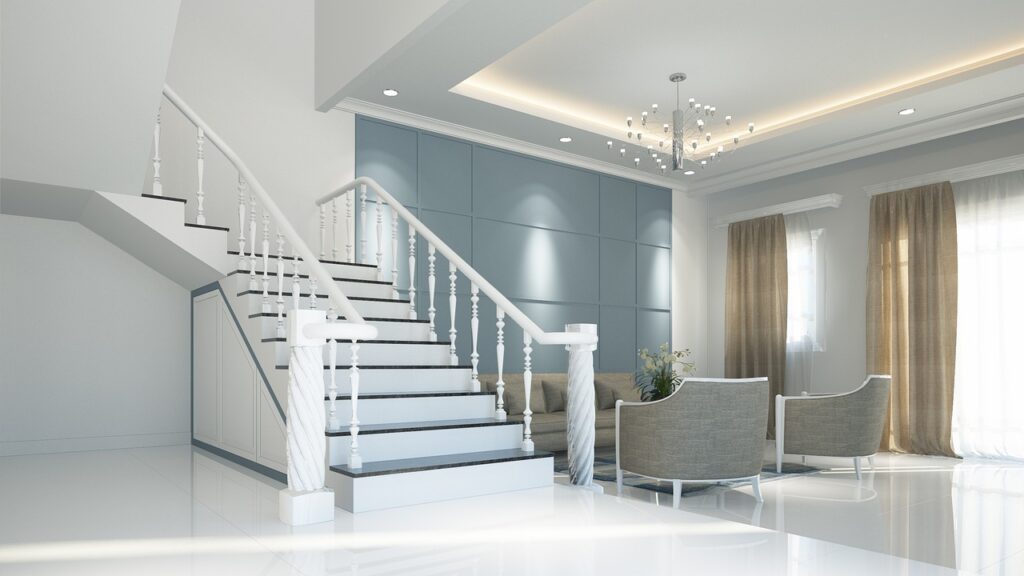Curious about the ABCs of architectural plans? Ever wondered what first-time home buyers need to know before diving into this realm? Unravel the mysteries and grasp the essentials with our guide. From deciphering blueprints to understanding measurements, we’ve got you covered. Ready to navigate the world of architectural plans like a pro?
Decoding Architectural Plans
Key Elements
Architectural plans contain essential components like floor plans, walkways, interior walls, and ceilings. Understanding these elements is crucial to grasp the design intent accurately.
Scale Interpretation
Accurate interpretation of scale and dimensions is vital when analyzing architectural plans. It ensures that the spatial relationships between different elements are correctly represented.
Symbols and Abbreviations
Recognizing symbols and abbreviations is key to effectively decoding architectural plans. These elements convey important information about the materials, fixtures, and structures specified in the plan.
Pros and Cons of Building vs Buying
Customization Benefits
Building a house allows customization to suit your preferences, ensuring every detail meets your needs perfectly. You have the freedom to choose layouts, materials, and finishes tailored to your taste.
Financial Considerations
One significant advantage of building a house is the potential for long-term cost savings. While initial costs may be higher, energy-efficient features can reduce utility bills over time, contributing to overall savings.
Timelines and Control
When building a house, you have greater control over the construction process compared to buying an existing property. This control extends to selecting contractors, monitoring progress, and ensuring quality at every stage.
Drawbacks of Building
A key drawback of building a house is the extended timeline involved. Construction from scratch typically takes longer than purchasing an existing property, requiring patience throughout the process.
Potential Cost Overruns
Building a house comes with the risk of cost overruns, where unexpected expenses may arise during construction. Factors such as material price fluctuations or unforeseen issues can impact your budget.
Resale Value and Investment
Despite higher initial costs, building a house can offer better resale value in the long run. Custom-built homes often attract buyers willing to pay more for personalized features and modern amenities.
Personalization Opportunities
Buying an existing property limits your ability to personalize the space according to your preferences. Renovations can be costly and may not fully align with your vision for the ideal home.
Maintenance Considerations
Newly built homes typically require less maintenance initially compared to older properties. With newer systems and materials in place, maintenance costs are generally lower in the early years of ownership.
Understanding Costs and Financing
Materials Costs
Materials costs are a significant part of any construction project. These include the expenses for building materials like wood, concrete, and steel. It’s crucial to source high-quality materials within your budget.
Labor Costs Labor costs involve paying workers who will be involved in the construction process. Hiring skilled laborers is essential to ensure the quality and timely completion of your project.
Permits and Unexpected Expenses
Obtaining permits from local authorities is a necessary step in any construction project. It’s vital to account for unexpected expenses, such as structural issues or design changes that may arise during construction.
- Pros: Ensures legal compliance.
- Cons: Can be time-consuming and add to overall costs.
Financing Options for First-Time Buyers
First-time buyers have various financing options available to them, including conventional loans, FHA loans, and seeking assistance from different lenders. Researching these options thoroughly can help you secure the best deal.
- Conventional loans typically require a higher credit score but offer more flexibility.
- FHA loans are government-backed loans that are accessible to buyers with lower credit scores.
Creating a Realistic Budget
Creating a realistic budget is crucial when embarking on a construction project. Consider all possible costs, including materials, labor, permits, and contingencies. Stick to your budget to avoid financial strain during the construction phase.
- List all anticipated expenses.
- Include a buffer for unexpected costs.
Choosing Between Contractors and DIY
Expertise vs. Learning Curve
Contractors: Hiring professional contractors for your home construction ensures that experts handle specialized tasks like electrical work and HVAC installation. Their experience leads to precise execution.
DIY: Opting for a DIY approach might seem cost-effective, but it comes with a steep learning curve. Without prior knowledge, mistakes are common.
Time Commitment and Quality Control
- Contractors: Professionals save you time by efficiently managing the project timeline. They also ensure high-quality work through their expertise.
- DIY: Taking on the project yourself demands significant time commitment. Juggling work, family, and construction can be overwhelming.
Safety Concerns and Rework Costs
- Contractors: Hiring professionals reduces safety risks associated with complex tasks like electrical installations. Moreover, their work is usually guaranteed, minimizing rework costs.
- DIY: Safety hazards loom large in DIY projects, especially when dealing with tasks like foam spray insulation. Mistakes may lead to expensive rework expenses.
Key Steps in the Home Building Process
Planning Stage
First, understand that the construction process begins with a detailed planning stage to bring your dream home to life. During this phase, architects and engineers work on creating architectural plans that outline every aspect of your future home.
Obtaining Permits and Approvals
Next, it’s crucial to emphasize the importance of obtaining necessary permits and approvals before starting any construction work. These documents ensure that your project complies with local building codes and regulations.
Site Preparation and Foundation
Site preparation marks the initial physical step in building your home. This involves clearing the land, leveling the ground, and laying down footings for the foundation. The foundation is essential as it provides structural support for your house.
Framing and Exterior Walls
Once the foundation is set, the framing stage begins. This involves constructing the skeleton of your home, including walls, roof trusses, and floor systems. Exterior walls are erected during this phase to enclose the structure and define its shape.
Finishing Touches
As construction progresses, attention shifts towards finishing touches that give your home its final look. This includes installing doors, windows, roofing, siding, and interior finishes like flooring, paint, and trim work.
Inspections and Finalization
Throughout the entire construction process, various inspections are conducted to ensure that each step meets quality standards. These inspections cover structural integrity, electrical systems, plumbing works, insulation installation, and overall safety compliance.
Importance of Working with a Real Estate Agent
While navigating through the complexities of home building, having a real estate agent by your side can be beneficial. They can assist in finding suitable land for construction projects or help you explore existing properties like tract homes if building from scratch seems daunting.
Pros:
- Real estate agents offer valuable insights into market trends.
- They can negotiate deals on your behalf.
Timeline for Constructing a House
Design Phase
During the design phase, architects work on creating detailed architectural plans for the entire house. This phase typically lasts around 2-4 months, depending on the complexity of the design and revisions needed.
Design Phase:
- Architects create detailed architectural plans
- Lasts around 2-4 months
Permitting Process
Once the architectural plans are finalized, the next step is obtaining building permits. The permitting process involves submitting the plans to local authorities for approval, which can take anywhere from a few weeks to several months.
Permitting Process:
- Obtaining building permits is crucial
- Approval timelines vary from weeks to months
Construction Phase
The construction phase kicks off once all necessary permits are secured. This stage involves building the house from the ground up, including framing, roofing, plumbing, and electrical work. On average, constructing a house takes about 6-9 months.
Construction Phase:
- Building the house from scratch
- Takes approximately 6-9 months on average
Final Touches
After the main construction is completed, it’s time for the final touches. This includes interior finishes such as painting, flooring installation, and landscaping. The final touches can add another 1-2 months to the overall timeline.
Final Touches:
- Interior finishes like painting and flooring
- Adds 1-2 months to the timeline
Factors Impacting Construction Timeline
Several factors can impact the construction timeline of a house. Weather delays can slow down progress significantly, especially in regions prone to extreme weather conditions. material availability plays a crucial role; shortages or delays in getting materials can lead to project setbacks.
Factors Impacting Construction Timeline:
- Weather delays can slow progress
- Material availability affects project timelines
Planning for Contingencies
To ensure that your house construction stays on track, it’s essential to plan ahead for contingencies and unexpected delays. Having a buffer in your timeline for unforeseen circumstances can help mitigate potential disruptions and keep the project moving forward smoothly.
Planning for Contingencies:
- Plan ahead for unexpected delays
- Include buffers in your timeline
Selecting Construction Materials
Types of Materials
When building a house, construction materials play a crucial role in determining its durability and overall quality. Common options include wood, concrete, steel, and eco-friendly alternatives like bamboo and recycled materials.
Considerations for Selection
To make an informed choice, evaluate the pros and cons of each material. Wood offers warmth and versatility but may require more maintenance. On the other hand, concrete provides strength and durability but can be expensive to install.
Sustainability and Cost Factors
When selecting construction materials, consider their sustainability and cost-effectiveness. Opt for eco-friendly choices like recycled materials or mineral wool insulation for improved energy efficiency. Assess the local market prices to stay within budget constraints.
Budget-Friendly Options
For first-time buyers, balancing quality with cost is essential. Explore budget-friendly alternatives such as cellulose insulation or standard drywall for interior finishes. These options offer good performance without breaking the bank.
Long-Term Maintenance
Prioritize materials that require minimal upkeep to reduce long-term maintenance costs. Choose durable flooring like hardwood or laminate that withstands wear and tear in high-traffic areas. Similarly, opt for durable countertops that resist stains and scratches.
Preparing for the Unexpected
Contingency Planning
First-time buyers embarking on a home construction journey must prioritize planning for unexpected challenges. Having a contingency plan in place can safeguard against unforeseen circumstances.
It’s crucial to anticipate potential hurdles such as design changes, material shortages, and contractor delays. By staying proactive and prepared, first-time buyers can navigate through these obstacles smoothly.
Flexibility and Adaptability
Maintaining flexibility and adaptability is key when facing uncertainties during the construction process. Being open to adjusting schedules, accommodating unexpected costs, and revising plans can lead to successful project completion.
Embracing changes and being willing to pivot when necessary ensures that the construction of your dream home progresses without significant setbacks.
Conclusion
You’ve now grasped the essentials of architectural plans, weighed the building versus buying options, understood costs and financing, and learned about contractors and DIY projects. You’ve explored the key steps in the home building process, the timeline for constructing a house, selected construction materials, and prepared for unexpected hurdles. Now armed with this knowledge, you’re better equipped to navigate the realm of architectural plans as a first-time buyer. Remember, informed decisions are powerful tools in your homeowner’s arsenal. So, go forth confidently and turn your dream home into a tangible reality!

Transform Your Home with Architectural Plans by Red White & Blue Construction!
Are you planning to enhance your home’s layout in Lafayette, CA? Look no further than Red White & Blue Construction for top-tier architectural plans! Specializing in detailed planning and execution, we customize our strategies to fit your unique needs and vision. Renowned for our expertise in architectural design, we are dedicated to transforming your space into a more stylish, functional, and modern environment. Every project we undertake is meticulously planned and executed to surpass your expectations. Our distinguished reputation throughout the Bay Area highlights our commitment to precision, quality, and the highest standards in every project phase.
At Red White & Blue Construction, we strive to do more than just update your home’s layout; we aim to elevate your entire renovation experience. With our comprehensive planning, transparent pricing, and unmatched customer service, choosing us for your architectural design needs ensures a smooth, efficient renovation journey. Choose Red White & Blue Construction and take the first step towards a more stylish and functional home. Contact us today to get started!
Disclaimer
The materials available on this website are for informational and entertainment purposes only and not to provide advice. You should obtain advice concerning any particular issue or problem from a professional. You should not act or refrain from acting based on any content included in this site without seeking legal or other professional advice. The information presented on this website may reflect only some of the current building developments. No action should be taken in reliance on the information on this website. We disclaim all liability concerning actions taken or not taken based on any or all of the contents of this site to the fullest extent permitted by law.





